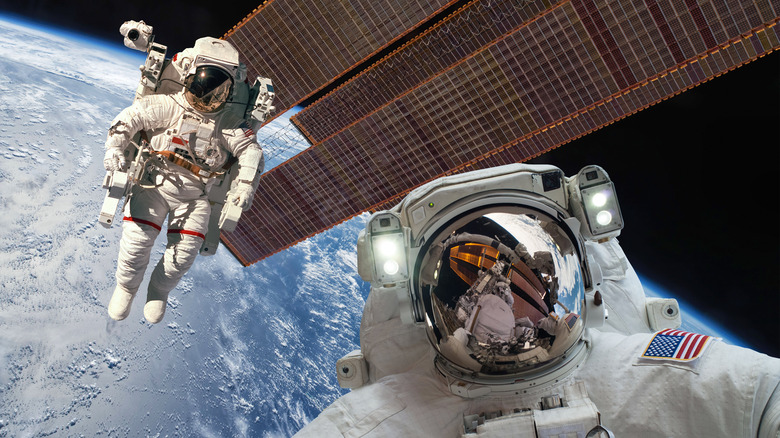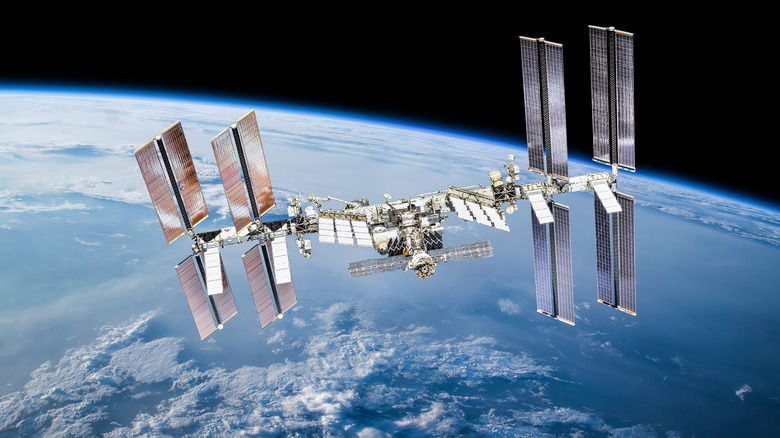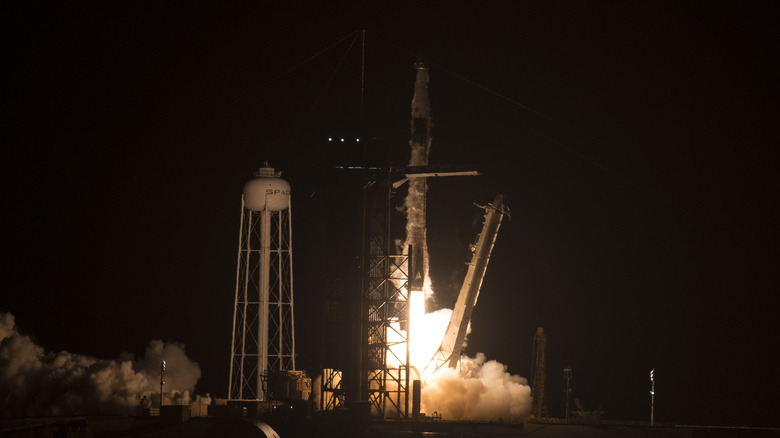What Happens If You Vomit In Space?
Lots of people get carsick or plane sick. There's a reason that airplanes give you those little paper bags to puke into. But, what about space-sick? In fact, it's very common for astronauts to get an upset stomach in space, as The Conversation notes. Known as space sickness or space adaptation syndrome (via the Smithsonian Magazine), the nauseous sensation arises from the disorientation of low-gravity environments, which can mess with the mechanism of your inner ear and make your brain feel like you're always moving. This strange sensation can in turn lead to nausea.
Like seasickness, space sickness tends to be worse during the first couple days of the journey, after which time their symptoms fade (via Mental Floss). But, just because space sickness fades doesn't make it any less important for astronauts to be prepared. In fact, though seasickness, carsickness, and plane sickness can all be easily handled, space sickness poses more of a logistical problem. In a zero-G environment, astronauts can't simply grab a trash can or book it towards the toilet when their stomach starts to churn. Instead, astronauts and space agencies need to have more creative nausea management protocols in place.
Astronauts have their own puke bags
When it came time for NASA to find an answer for the nausea problem, they turned to a tried-and-true method: the puke bag (via Mental Floss). Much in the same way that kids on airplanes are given small paper bags by their parents to breathe into when they're feeling nauseous, astronauts have their own personalized puke bags to use when they just can't swallow it back any longer.
But, NASA's puke bags are a little more unique than what you might find on an airplane. These bags have been specially designed to stand up to the rigors of space. For one, they have face wipes built into the design so that astronauts can clean up any vomit which might have floated up onto their face while they were heaving, as Space notes. There are also special features built into the bag that ensure that it can be stored safely for long periods of time — because, unlike on Earth, astronauts can't just throw their puke bags down the garbage chute.
The puke bags stay on the space station
With nowhere else to put them, puke bags must stay on the International Space Station even after they have been used. In a video on the YouTube channel VideoFromSpace, Astronaut Chris Hadfield explained the problem by saying, "This bag has to stay with me in space for months, so we want a really good barf bag. So we have one that will really protect us."
For NASA astronauts, that means a puke bag with a special ziplock attached. Once the puke bag has been used, it can be safely sealed, alongside all its contents, into a ziplock. Then, the bag is placed with other refuse. While on the space station, astronauts do their best to repurpose everything possible — even using water filtration systems to recycle their own water waste. However, true waste products are sometimes created, and these are sorted into wet and dry trash, according to NASA. The puke bags go in with the wet stuff.
The trash is traded off during resupply missions
The International Space Station is shared by many nations, and has a crew of seven individuals on board, according to NASA, with most astronauts being in space for about six months, according to the Kennedy Space Center. With so many people up in space for so long, restocking missions are crucial to keep astronauts well-fed and well-supplied. But, restocking missions also have a secondary purpose: helping astronauts finally get rid of their garbage.
As NASA reports, both wet and dry trash is removed from the space station during restocking missions. By bundling the trash into small, oblong objects, the trash can be taken back to the restocking shuttle. What happens to the trash when it gets back on Earth? Well, it doesn't actually make it that far. The shuttles are designed to burn the trash on reentry, meaning the vaporized form of the trash — including vaporized astronaut vomit — is likely still out there, in some molecular form, floating around our atmosphere.
It's a tidy process. Still, with garbage only being removed from the station once every few months, according to NASA, those special bags for puke are still very important to ensuring the International Space Station remains a clean, hospitable place to live.



